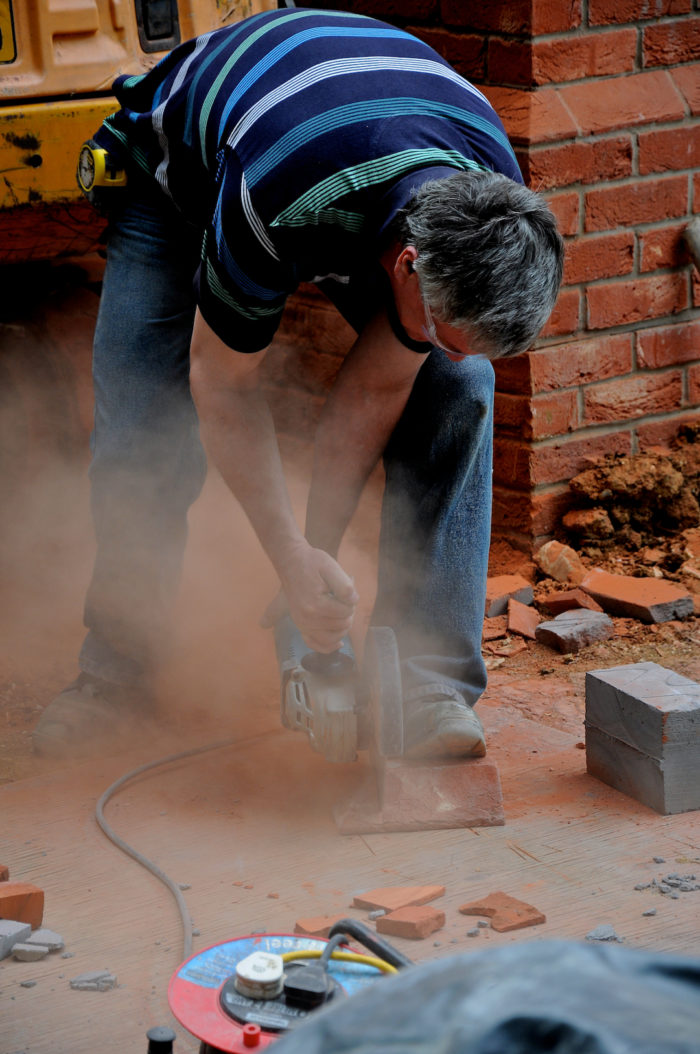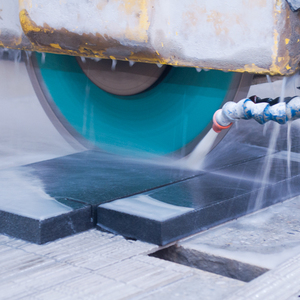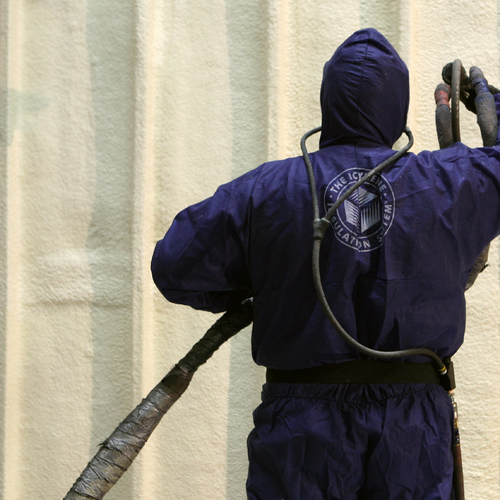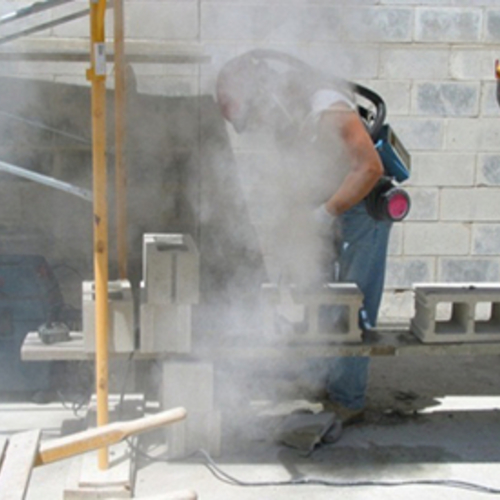
Image Credit: Martin Pettitt / CC BY 2.0 / Flickr
The Department of Labor has released long-awaited revisions to rules on worker exposure to silica dust, cutting permissible exposure for millions of workers and setting new requirements for employers.
Allowable exposure to silica dust in the construction industry will drop from 250 micrograms per cubic meter to 50 micrograms, averaged over an eight-hour period — a reduction of 80%. The final rule comes in two parts: one for the construction industry, which takes effect on June 23, 2017, and another for general and maritime industries, which kicks in the following year.
In addition to limiting exposure to dust, employers will also be required to provide medical exams once every three years for some workers, and to keep records of instances in which workers are exposed to silica.
The revisions have been years in the making. Silica dust, which can scar lungs and cause diseases such as silicosis and cancer, is produced in a variety of ways in the construction industry — by workers cutting stone and masonry products, for example, and by those working in some manufacturing jobs that use sand, a National Public Radio report said.
More than 2 million workers in the U.S. are exposed to silica dust, and Labor Secretary Tom Perez told NPR that scientists have known for decades that rules established in the early 1970s were too lax.
“We’ve known for over 40 years that it needed to be strengthened, and it has taken 40 years to strengthen it,” Perez told NPR of the exposure limit. “Many people who are going to work right now and breathing unacceptable levels of silica dust are in for a brighter future.”
The construction industry has opposed changes
Construction trade groups have lobbied against tighter regulations, arguing that OSHA should do a better job of enforcing existing limits rather than put new ones into place. A consortium of trade groups called the Construction Industry Safety Coalition — which includes Associated General Contractors of America, the National Association of Home Builders, and some 20 other groups — claimed that OSHA’s planned revisions would cost the industry billions of dollars more than government estimates.
The group said that compliance with the 250-microgram limit would cost $4.9 billion per year, 10 times what OSHA was estimating. In addition, it said that the Centers for Disease Control and Prevention reports a 93% drop in silica-related deaths between 1968 and 2007, suggesting that new limits weren’t really necessary.
In a letter to the Labor Department last year, the group also said that the proposed regulations would reduce the number of jobs in the U.S. by more than 52,700, including 20,800 in construction jobs and another 12,180 in industries that supply materials, products, or services to the construction industry.
“Our initial reaction is that this appears to be a lost opportunity to improve workplace health and safety,” Brian Turmail of Associated General Contractors told the website ConstructionDive. “Instead of crafting new and innovative ways to get more firms to comply with the current silica standard, which we know would save even more workers each year, administration officials have instead opted to set a new standard that is well beyond the capabilities of all current air filtration and dust removal technologies.”
He also warned that new rules could cause construction delays and and increase construction costs “significantly.”
Labor unions applaud the changes
The AFL-CIO and the Building Trades Union, on the other hand, welcomed the changes. OSHA estimates that 2.3 million U.S. workers are exposed to respirable crystalline silica on the job, including 2 million construction workers and another 300,000 who work in brick manufacturing, foundries, and hydraulic fracturing.
OSHA says that most employers will be able to limit exposure to dust by using widely available equipment that uses water to prevent dust from becoming airborne or ventilation equipment to capture it. The agency also said that it made a number of revisions in the proposed regulation that lessened the burden on employers.
The final rule requires employers to:
- Provide engineering controls (such as ventilation or water) and adopt work practices to limit exposure.
- Provide respiratory protection when controls are not capable of limiting exposures to permissible levels.
- Limit access to areas where exposure to dust is likely to be high.
- Train workers and provide medical exams to workers who are exposed to high levels of dust.
OSHA added that “a table of specified controls” is included in the rule to make it easier for construction employers, especially small employers, to comply with the regulations without having to monitor exposures. This information is contained in what OSHA calls Table 1 in the final rule. For example, when the employee is using a stationary masonry saw with an integrated system that continuously feeds water to the blade (such as a wet saw for tile), no required respiratory protection is required. The rule also spells out requirements for workers using handheld saws to cut fiber-cement board, walk-behind saws, and a variety of other tools and equipment.
OSHA spokesman Brian Hawthorne said that the agency heard employers “loud and clear” when they said that they wanted an uncomplicated means of compliance, so OSHA compiled a list of common tasks and how workers should be protected. That list became Table 1.
Hawthorne also encouraged employers to contact their local OSHA offices, where they would find staffers “briefed and available” to help them be ready when the rule takes effect in June 2017.
Weekly Newsletter
Get building science and energy efficiency advice, plus special offers, in your inbox.















3 Comments
Guillotine shears instead of the circular saws
That's should really help with regards to cutting cement siding.
it might help procedures
Wow, when I think back to the huge, neighborhood-engulfing clouds
of concrete dust the guys raised while slicing up a bunch of
driveway pavers here...
_H*
Tyranny
At an Osha training course a couple years ago, a spokesmen who works to advise private companies on Osha compliance, made an off hand comment that has stuck with me, something to the effect.."In all my years working with companies to comply with Osha standards, I have never had a single inspection where the Osha officer hasn't issued a fine or infraction. Even on what we thought were the most well prepared, compliant, safest, jobsites. Never!"
OSHA has lost good faith.
Taxation without representation.
Log in or create an account to post a comment.
Sign up Log in